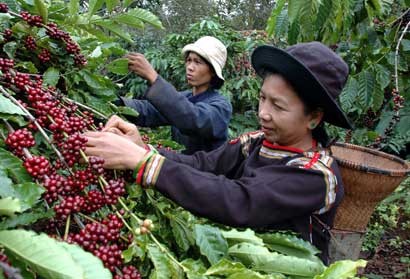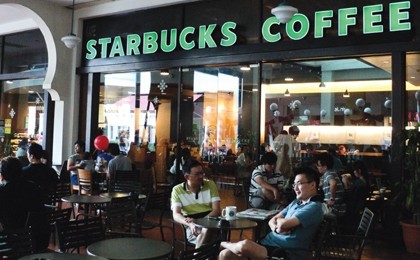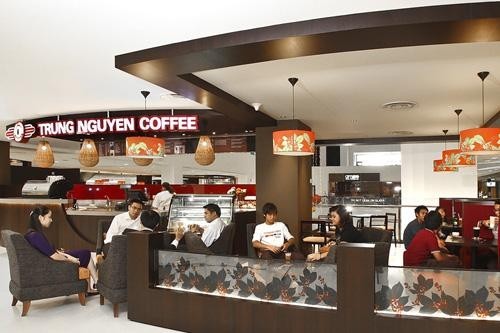 Women pick coffee beans in Buon Ma Thuoät City. Coffee cultivation areas are to be limited to 500,000ha. (VNA/VNS Photo Tran Viet)
Women pick coffee beans in Buon Ma Thuoät City. Coffee cultivation areas are to be limited to 500,000ha. (VNA/VNS Photo Tran Viet)
(VOVworld) – Vietnam is the world’s second largest coffee exporter and leads the world in Robusta production and export. But Vietnam’s exported coffee remains in the form of unprocessed beans with no added value. This is an issue the government and the coffee sector are paying close attention to, hoping to improve the brand of Vietnamese coffee.
Vietnam has more than 640,000 hectares of coffee plantation, mainly in the Central Highlands, and its coffee is exported to 60 countries worldwide. Last year the industry brought Vietnam some 3.4 billion USD in revenue.
But the Vietnamese coffee sector is facing several unsolved problems including unstable growing scale, aging coffee trees, poor quality control, and outdated processing technology.
FDI enterprises currently collect 60 percent of Vietnam’s total output, which means foreign companies dominate coffee purchasing in Vietnam.
Developing coffee sustainably will require more support policies to make domestic companies strong enough to dominate the local market.
Nguyen Thanh Tuyen, a researcher on the sustainable development of coffee in Dak Lac province, said Vietnam has recently boosted its investment in processing technology and brand building for Vietnamese coffee.
Tuyen explained further: “Vietnam leads the world in Robusta production and export. But its price is low because Vietnam hasn’t attached much importance to granting certificates of geographical indication for coffee growers and processors. That’s why consumers around the world don’t know Vietnamese coffee or even that Vietnam produces coffee. That means we need to should increase promotion for our trademark to reduce risks and raise the value of Vietnamese export coffee.”
Major issues facing the industry are replanting 150,000 ha of aging coffee trees, applying Good Agriculture Practices, and linking growers and enterprises. Otherwise Vietnam’s future coffee output is likely to diminish.
 |
A Starbucks store in Vietnam (Photo: vir.com.vn)
|
In recent years, a number of globally well-known coffee brands have opened stores in Vietnam, including the US Coffee Bean & Tea Leaf, Australia’s Gloria Jean’s, and the latest, the US’ coffee giant Starbucks. The competitive pressure has forced domestic coffee processors to battle for the local market while trying to build a national brand for Vietnamese coffee.
 |
Trung Nguyen coffee shop in Singapore.(Photo: vietnamnet)
|
Vietnam’s coffee king, Dang Le Nguyen Vu, CEO of Trung Nguyen Coffee, said:“the building of a national trademark is a joint mission not just of enterprises but of the entire country, which should involve the vision of leaders, policy makers, businessmen, and the community. We should pay more attention to how the world responds to Vietnamese coffee and engrave on the minds of consumers around the globe a strong image for Vietnamese coffee.”
The government has issued a decree encouraging investment in agriculture, including coffee processing, to create better conditions for improving coffee values and elevating Vietnamese coffee brand in the world.